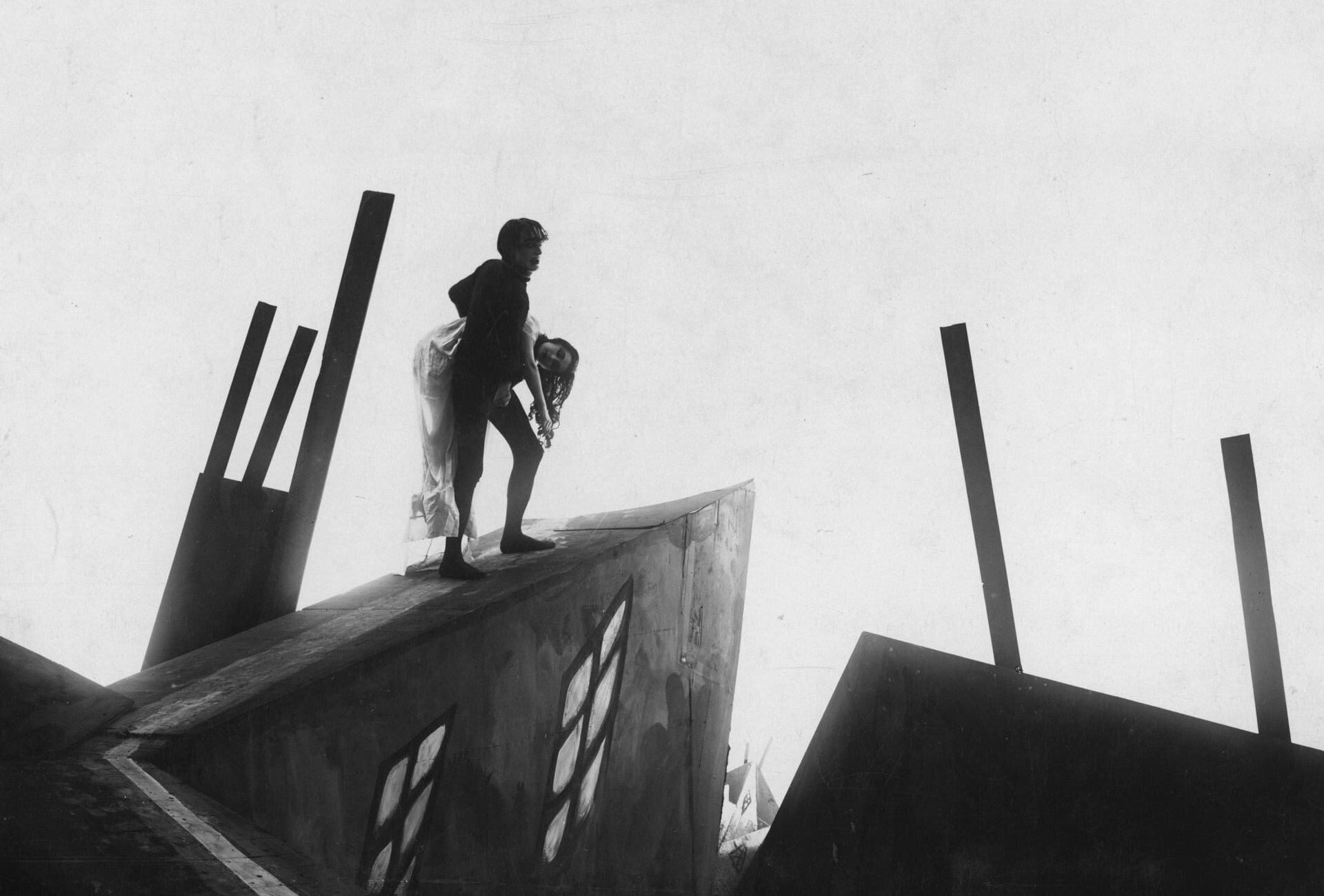Ep. 1 / Beginnings:
The Cabinet of Dr. Caligari,
the Rise of Expressionism, and
the Long Shadow of World War I
The Cabinet of Dr. Caligari (Das Cabinet des Dr. Caligari)
Listen on Apple Podcasts, Spotify, or Google Podcasts.
Dark times call for dark movies…
A world war lost. An economy in tatters. A country riven by political violence. Germany’s Weimar Era had a tumultuous birth, and with The Cabinet of Dr. Caligari, its filmmakers began to channel that mayhem into sinister celluloid fantasies.
Caligari is available for free on YouTube.
Images
Podcasts have their limits, especially podcasts about a medium as visual as film. Below are some images that may enrich your experience with this episode.
A map from the BBC showing German territorial losses after World War I.
Caligari’s unique look was the work of designers Hermann Warm, Walter Reimann, and Walter Röhrig.
Expressionist sets like this one, for Ernst Toller’s play Transfiguration (Die Wandlung), helped inspire the Caligari aesthetic.
Norwegian artist Edvard Munch’s 1893 composition The Scream anticipated the Expressionist movement’s turn away from depicting external reality, concentrating instead on internal emotional experience.
Ernst Ludwig Kirchner painted Self-Portrait as a Soldier (Selbstbildnis als Soldat) after a mental breakdown led to his discharge from the German army in 1915. Kirchner was a founding member of Die Brücke (The Bridge), one of the two major groups of Expressionist visual artists working in Germany.
The other major Expressionist group was the Blue Rider (Der blaue Reiter), which published a sampling of its work and ideas in The Blue Rider Almanac (Der blaue Reiter Almanach) in 1912. The cover was created by Russian émigré Wassily Kandinksy.
In the episode, I mention that Oskcar Kokoschka’s 1914 painting The Bride of Wind (Die Windsbraut) was the wallpaper on my computer in high school. It shows the artist lying beside and his lover Alma Mahler.
Still from the 1920 Expressionist classic The Golem: How He Came into the World (Der Golem, wie er in die Welt Kam), starring Paul Wegener in the title role. Note Wegener’s earthen costume and the Caligari-esque geometry of the set.
Caligari director Robert Wiene, in photo and caricature. The drawing was printed in the publication Mein Film in 1926, but I found it in this article by Uli Jung and Walter Schatzberg.
The iconic moment when Dr. Caligari’s somnambulist Cesare first opens his eyes, one of the two moments that the critic David Robinson cites as exemplifying Wiene’s creative contributions to the film. Gif from Shudder.
Robinson’s other moment, when Cesare enters Jane’s bedroom.
Music & Clips
The theme for The Haunted Screen is “Nostromo” by The Great Pacific Garbage Vortex, who also contributed the songs “Cloud City,” “viewmaster,” “you said it hurts,” “Dr. Mann’s Planet,” and “Isla Nubar.” Additional music:
“Entropy” by Evgeny Bardyuzha
“Chill Abstract (Intention)” by Coma-Media
“Hallway of Memorys” by Arndt Stelter
“Zither Polka” by JuliusH
“Winning Elevation” by Hot Music
“Spirit Blossom” by Roman Belov
“Tense Detective” by Zakhar Valaha
In accordance with the principles of fair use, this episode uses clips from The Unbearable Weight of Massive Talent, CNN, CBS, The Telegraph, Only Lovers Left Alive, ITV, the BBC, This Week (UK), Riverdale, Memories of Berlin, Lotte Eisner in Germany, An Unfortunate Series of Events, Rosa Luxemburg, Portlandia, Mad Men, The Black Pit of Dr. M, Cabaret, and Saturday Night Live.












